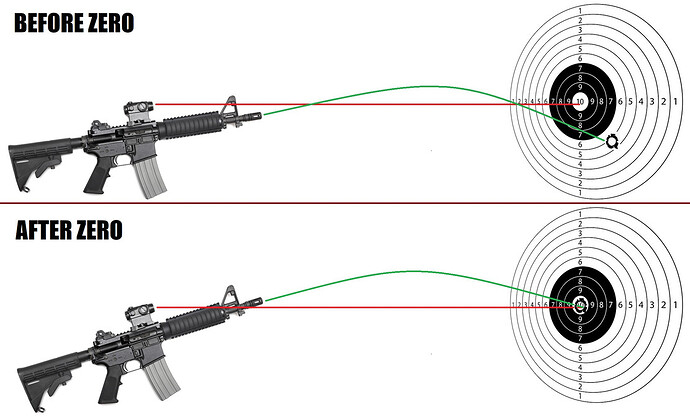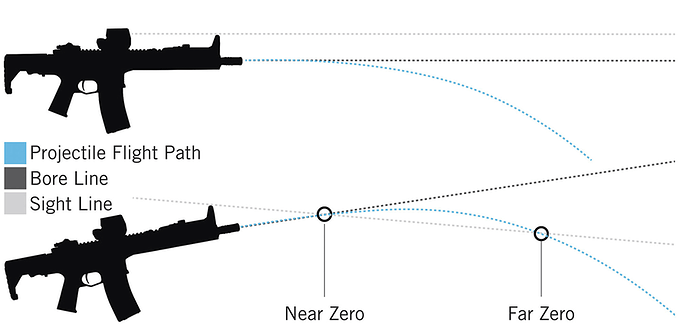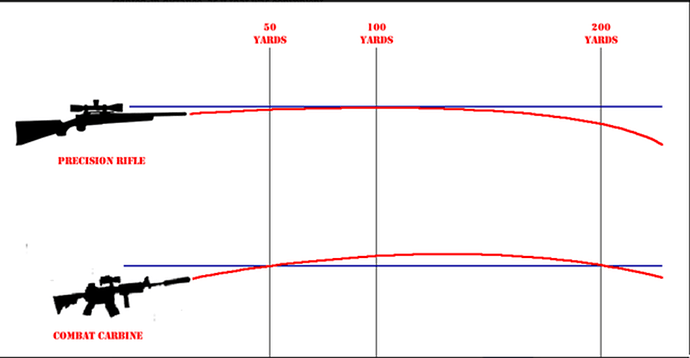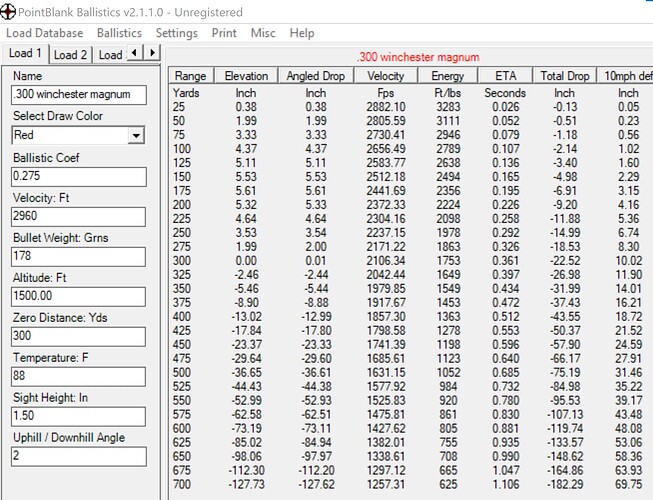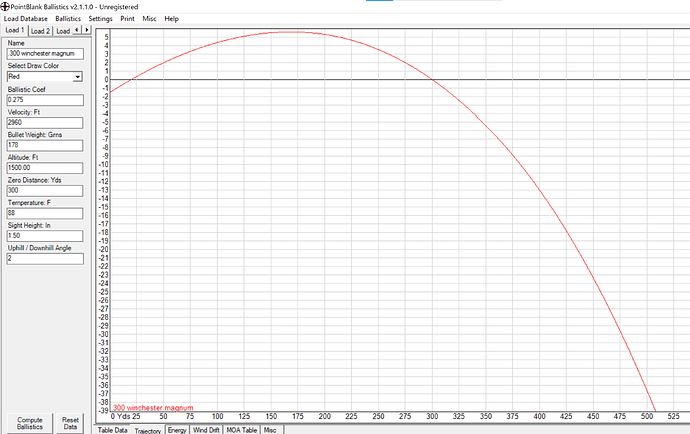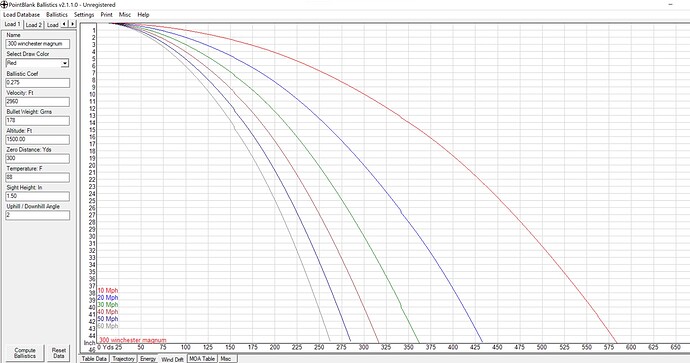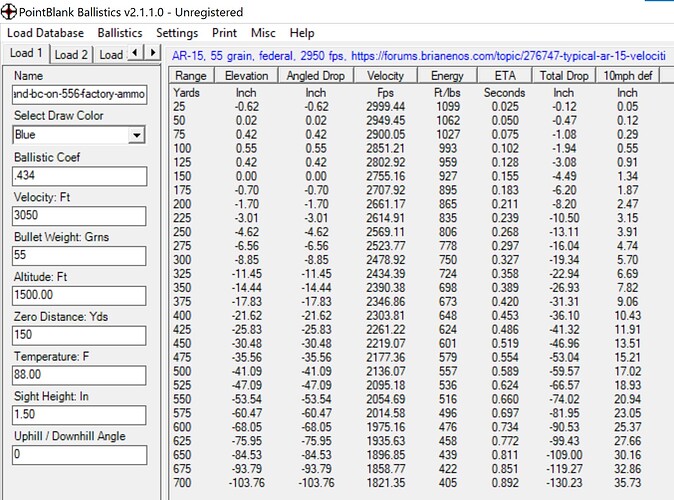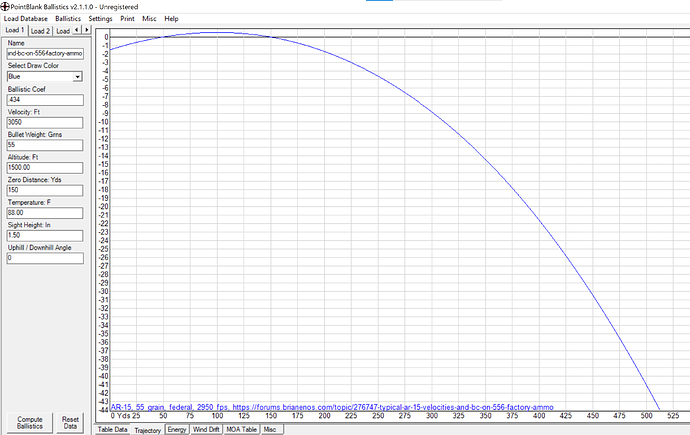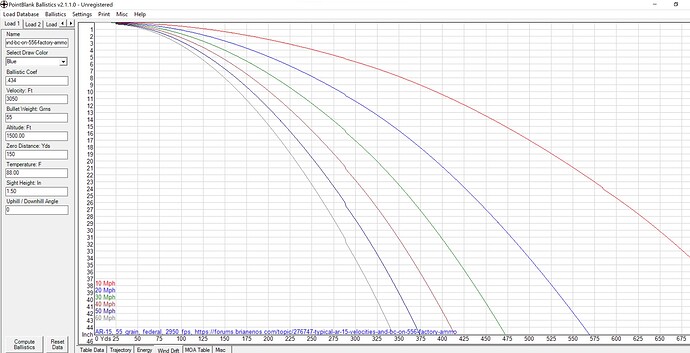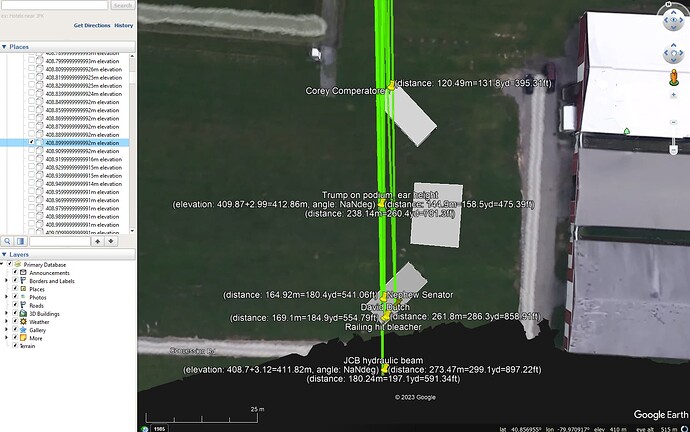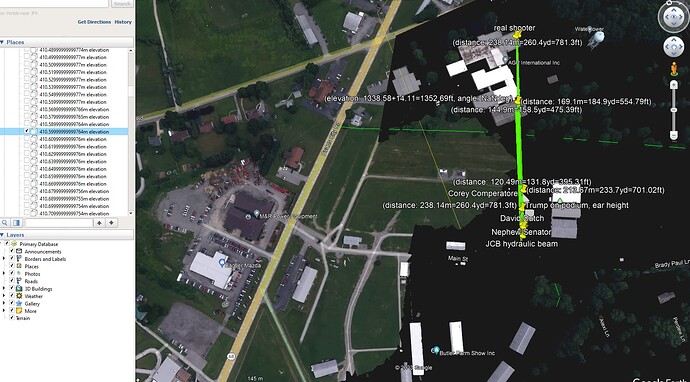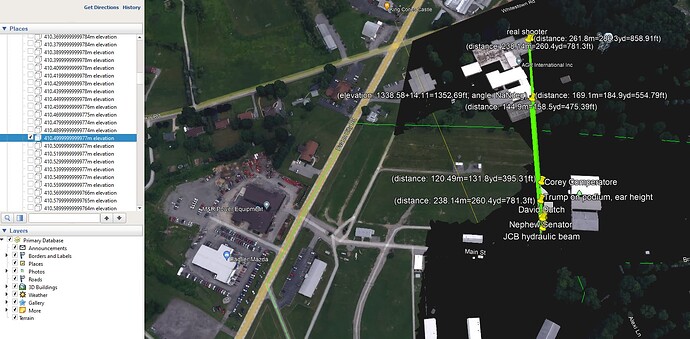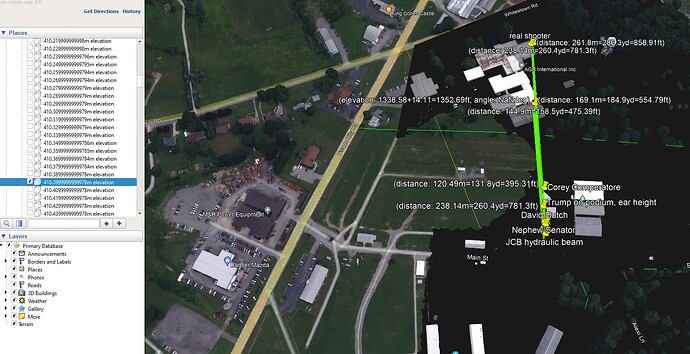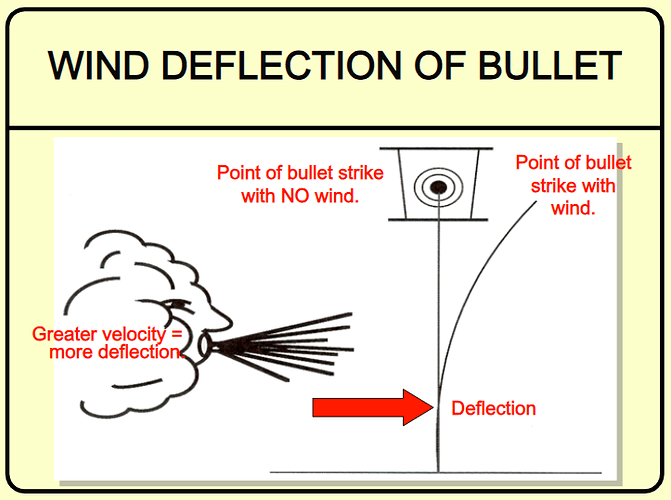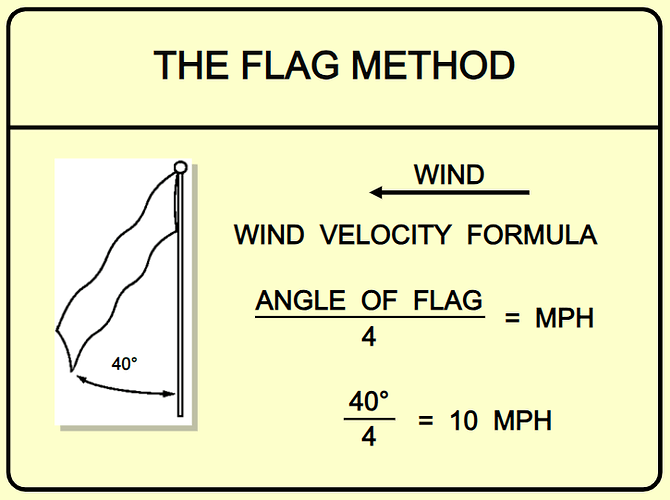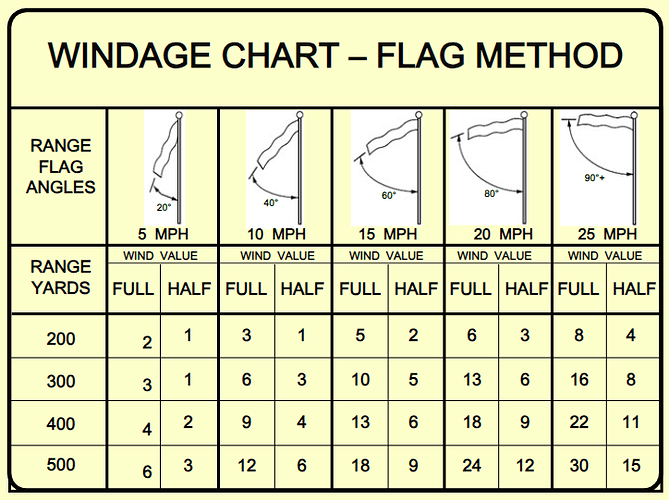Do we have other evidence of a vehicle with lit headlights almost directly behind Dave at that time? If it was headlights, shouldn’t we see a pair of lights?
IMO, a pro with night vision, it will turn off when flipped in the up position. outside the cheapest of options, they have a position switch built into them. Otherwise you give your location away to any other night vision looking your direction.
Actually, in the rooftop bodycam videos, some of the Camo ESU dudes have NODs flipped up on their helmets. Personaly, I wouldn’t have them on my helmet during daytime operations. They’re expensive and too easy to get damaged.
yeah but there is no need for night vision for a target in broad daylight.
i can sit here with an LPVO in a dark room, look outside into the dark night, faintly illuminated street, and still see clear people in the glass. a person sitting in a room looking outside at a target in broad daylight would be perfectly fine with a standard like $400-600 LPVO scope. plus there are so many different options to prevent scope glare, if that’s the issue. I just can’t see this as holding any kind of ground whatsoever being that there are more cheaper and realistic options available…
hello Roger,
it also depends on the angle at which the bullet is fired. the bullet does not start horizontally, but makes a parabola type of motion
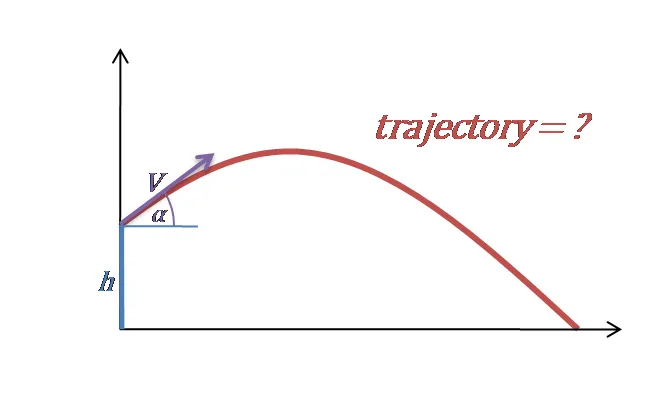
the omni calculator shows a very straightforward formula you could implement to approximate the vertical motion.
the angle at which was shot depends on the zeroing of the rifle. this can be adjusted by the shooter using a range finder.
as a range finder was recovered, it is reasonable to assume that the shots were fired with a scope that was zeroed in on the target.
e.g., if the rifle was zeroed at 100 yards, and the range finder reported, e.g., 130 yards, it is reasonable to assume that the rifle was adjusted for, e.g., 125 yards.
so, if you would shoot horizontally without taking into account a correctly zeroed scope, you would get something like this:
where the bottom picture shows that the zeroing does not make much difference for very nearby shots, but the further the target, the more it plays a role
the following image shows the difference between a rifle like the AR-15 (or the DPMS A-15 as was recovered near the body) and a decent hunting or sniper rifle:
the sniper rifles as those used by the snipers behind Trump have a very low vertical drop for the first 250-300 yards, so for these rifles it is reasonable to assume that there is only a couple of centimeters drop over 250-300 yards
the DPMS A-15 has a bigger vertical drop.
about horizontal deviation due to wind… this is a whole other story and is not easy to estimate without accurate windspeed measurements…
the position of the flag can help, but we do not know the weight and dimensions of that flag to accurately guestimate the windspeed…
You are being redirected... shows an example for a 105 grain bullet shot at 2920 fps with a 10 mph windy condition:
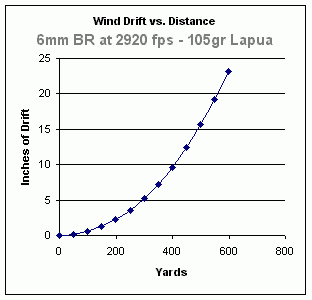
so, the only thing we can do is model where the bullet would have gone under different wind speeds
you can install an application like HuntingNut and enter the parameters of the rifle, scope and bullet…
when you use that program and put in the data for the sniper rifles with the ammunition they would typically use in that type of rifle, you get this (using the right speed of sound and assuming a zero at 300 yards):
as I said, the wind drift is a whole other story…
when we use the data for an AR-15 with similar parameters and zeroed at 150 yards
should you wonder what the differences are between G1 and G7 ballistic coefficients, you can compare these shapes:
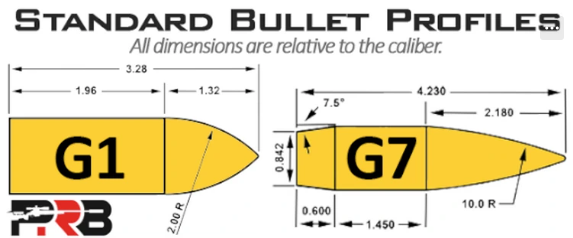
bottom line: your backtrace simulation should thus take into account the following parameters:
- muzzle velocity
- zeroing distance
- weight of the bullet in grains
- ballistic coefficient of the shape of the bullet
- ambient temperature (88 degrees Fahrenheit for the Butler rally)
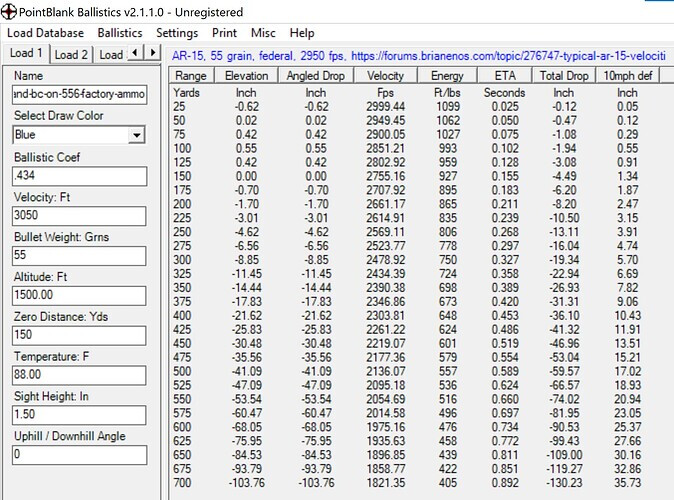
503 ft would be about 167 yards…
so, 6 inch would be a reasonable assumption for the vertical drop when using an AR-15, but this is not due to gravity…
What causes a bullet to drop, if not gravity? What other force pushes or pulls the bullet down?
and what about slightly autistic too? ![]()
electrostatics…
and even wind turbulence could change the bullet’s vertical drop…
but about bullet drops, it is much more than gravity alone, he… the muzzle velocity and angle of shooting weigh much more in on the vertical drop over 500 ft compared to gravity…
velocity for bullet used is too high, there is no confirmation that the AR-15 barrel length is longer than 16", and AR’s with a 16" barrel cannot get up to 3050 consistently, maybe sometimes, and we’re talking best quality rifle + best ammo. I think 2600-2700 is more realistic.
also your calculations for 150 yards show negligible effects, bullets would still hit the target pretty accurately had he aimed center mass and didn’t fire so fast.
you really make my day by looking at the kml I uploaded!
much appreciated!
the reason why I am very confident in the elevation figures I use and mentioned in my previous posts is because I added in that kml file a (rather big) folder called “horizontal planes”.
this folder is not ticked/visible while opening the kml file, and I do not recommend ticking the whole folder for the very simple reason that it would black out most of the view on your screen ![]()
first, untick the ground overlays, as I had to fix the ground overlays at a certain height to avoid the picture distortions that caused some confusion first… the ground overlays are not/less distorted when using absolute heights and a nearly vertical image looking straight down
if you tick, e.g., 408.90m elevation, you will see some “black” creeping up from below the picture
this means that everything that is no longer visible (and is blackened out) is BELOW 408.9m.
the JCB hydraulic lift is blackened out, so it is on a ground level BELOW 408.9m
if you untick 408.9m and tick the 408.63m elevation pane you will see that the JCB lift was at about 408.63m elevation.
and you can do this for each point of interest.
the ground level of the pin that goes vertically straight down for the pin called Trump on podium, ear height, shows 409.87+2.99=412.86m
this means that if you show a horizontal pane around 409.87, that it will blacken out the surface below that pin, and the elevation of that pin is about the height/elevation of that horizontal plane…
another example, if you go to the roof where that man was shot dead, you will see something like this:
these pins refer to the end of the barrel of the rifle used by the man on that roof.
on the right hand side, lots is blackened out. the border line where the black meets the green, the elevation is 409.89m
if you look at any of these pins, you will see, e.g., elevation 408+4.3=412.3m
that means that the ground level at that site is reported as 408m, the muzzle is 4.3m above ground level and that totals to 412.3m
assume that the average eye height of an eye witness would be at 1.7m, one could show the horizontal plane at 412.3-1.7=410.6m.
this results in a view like:
what this means is that everybody who would be standing in a place that is not blackened out who has eyes at or above 1.7m would be able to see the muzzle should they have paid attention and if their line of sight was not blocked, e.g., by trees or higher people or constructions, etc.
if we assume that the eye height of a person would be at 1.8m, one would get
a plane at 420.4m gives
etc.
we should thus focus on people who made recordings from the areas that are not blackened out in these pictures, as they would have had very good chances to capture what really went on on that roof…
cool. I will use these speeds in my model.
what ballistic coefficient would you suggest?
thanks for your feedback.
The Hornady 22 Cal .224 55 gr V-MAX® is .255 (G1) for the lower end
at around 3000-3250 fps
The Sierra Bullets .224 dia. 77 gr. HPBT MatchKing is .372
at around 2750-2850 fps
That will give you some number to play with.
if you count the number of horizontal ribs from the muzzle to the end of the barrel and the end of the stock you can caluculate the length of the barrel based on the size of the roof and the distance between these horizontal ribs…
an image of the rifle at a different angle would this calculation easier…
hello Roger,
in order to avoid that you accuse me of not coming back to your comments, I will give you a detailed reply.
Sgt Raven can add pedantic to the list he keeps too ![]()
(I am using the term pedantic in the context used by compilers of programming languages that support the --pedantic flag such that they give elaborate feedback, nothing else is implied with this term!)
I showed you several times google earth lines of sight from the high buildind behind the building where the man was shot dead where these lines of sight had end points starting with the real shooter at about 9m above the ground from the ground of that building and 3.12m above the ground where the JCB lift was hit.
each time, you came back with the claim that somebody who shot from that building would have had to shoot almost horizontally and through several buildings in between because the shot had to be (in your opinion) almost horizontally:
in this quote you clearly use only the heights of Trump’s ear and the height of the corner of the bleachers, neglecting that their heights are measured from different ground floor levels (ground level at Trump’s ear position is 409.87m, estimated height of Trump’s ear 2.99m above ground level and ground level at the corner of the right bleacher is 408.99m, estimated height 3.1m above ground level)
Trump’s ear is at elevation 412.86, and the
corner of the bleacher at 412.09m, and the impact
height of the JCB lift is at 411.82m.
this is a clearly downhill line, and it is totally consistent with a shooter from the building I have been mentioning over and over…
still you backtrace this data to a horizontal line based on the height of Trump’s ear and the height of the corner of the right bleacher…
this is why I immediately told you that your heights offsets were wrong, and as I was not yet totally aware of how your system worked, I asked you for the height of that high building, because I thought (now I know better) that you were testing what I said: I claimed that somebody was shooting from the roof of that high building, and if you ended up with a horizontal line, that would have implied that the roof wat at Trump’s ear level, which led me to believe that the roof height in your system was off…
you never really answered my request regarding the height of that building. it was only many days later that I figured out from one of the building schemes you posted that the building had a reasonable height (still too high compared to my model, but that would even have enforced my claim that the real shooter was using that top roof, but soit).
so, the bottom line is that you are
- using heights as reference
- neglecting the ground levels, and these vary greatly over the whole area
- if you look at the elevation of the different shooter options, Trump’s ear, the corner of the right bleacher and the impact on the JCB hydraulic lift, you would come to a correct conclusion
- missing the point as you do not take the elevations of the different actors into consideration
in order to make my reply not too long (given that this is only the first point), I will come back to your other points next.
I would appreciate it if you reacted in a non-hostile and non-offensive manner.
everybody makes mistakes, and no model is perfect, we correct these and move on.
the only intention I have is to make your and my model better.
I am not emotionally attached to any of the systems and any of the models and any of the hypothesis or claims made by whoever, including myself.
I only care (Sgt Raven can add naieve and apathic to the list) about correctness and transparency, because that is the only way we can find out what happened.
the problem with this approach is that bullets do not travel in a straight line, where you assume they do.
if you look at it in the vertical space, you will see something like this:
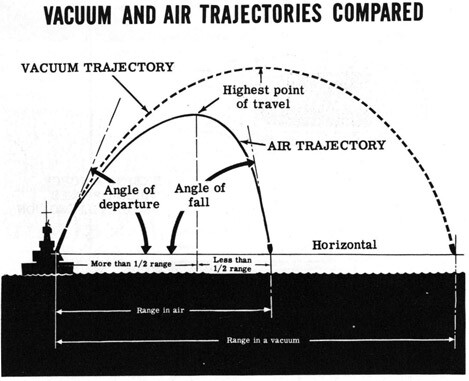
the forces in play in this is atmospheric pressure, temperature, gravity, electrostatic attraction, muzzle angle, muzzle velocity, wind turbulence, air humidity, etc
but if you look straight down, the bullet trajectory also makes a curve. in order to reach the target you have to “shoot against the wind direction” to compensate for the wind deflection of the bullet (slides shameless(hint for Sgt Raven ![]() )ly stolen from Deflection Greater velocity = more deflection. WIND DEFLECTION OF BULLET Point of bullet strike with NO wind. Point of bullet strike with wind. - ppt download):
)ly stolen from Deflection Greater velocity = more deflection. WIND DEFLECTION OF BULLET Point of bullet strike with NO wind. Point of bullet strike with wind. - ppt download):
the second part I emphasized is that you believe that your calculations represent and even match reality, where it is far more complicated than that…
hence how I came to the model I am using:
- initially, I eyeballed where the shots could have come from, and as soon as you have established that area,
- then you can look at locations that would enable a professional sniper to do these things
- then you start lowering down the standards and see what a professional shooter, amateur shooter and a novice would have to do to get the job done
- then you match everything with the observed reality from original/primary sources that have been obtained as close in time as possible
- I reject every eye witness report, witness report and analysis and statement from whoever that is not backed up or that is not consistent with primary references
about the two points of reference you swear by, namely Trump’s ear and the corner of the right bleacher, these are not accurate to guestimate whatsoever!
not even the exact position of the impact of the JCB hydraulic lift that I am using in my model!
the further reference points are from each other, the better candidates they are to guestimate lines of sight, and the corner of the right bleacher is simply not an accurate point to refer to… that is not opinion, that is fact:
- nobody knows where exactly the bullet struck on that railing. we only have the puffy cloud, but that is not enough to determine whether it was a hit, a graze, a penetration, etc, etc.
- we do know that the 1st bullet moved along end hit the JCB hydraulic lift.
I went to a construction site to inspect a very similar JCB hydraulic lift and compare the heights of what I saw in the image where the hydraulic fluid sprayed out, and I checked out the dimensions of the exact tractor that was in front of that lift to come up with the approximate height and coordinates of the point that I use as the end point of the first bullet’s trajectory.
this means that the trajectory of the bullet:
- started at the muzzle of the shooter (whichever this was),
- he shot against the wind direction (thus not straight at Trump or the corner of the right bleacher or the hydraulics of the JCB lift)
- grazed along Trump’s ear while the bullet traveled in a downwards slope coming from an angle that was totally different from the angle the shooter shot at
- hit the railing, and this may have deflected the bullet’s path. as I have shown in my previous posts (I do not know whether you read these, as you reported two days ago that you ignored most of my information), it is highly likely that this deviation is very minor, as a sniper bullet (which I think has been used) penetrates 10 sheets of 16 gauge solid steel sheets (total of 1.6 inches = 4 cm of solid steel) without any vertical or horizontal deviation, and the bleachers were made of galvanized steel, which is much less than these 10 sheets
- and ended up in the JCB hydraulics…
so, both in the horizontal and vertical plane, the bullet makes kind of a parabolic arc…
however, a line of sight is, a very good predictor to determine whether one can hit something or not: if you can see it, you can hit it, but it takes skill and the right hardware (gun and ammunition) to get it.
it is certainly true that I have not seen most of the information that has been posted on this forum!
it really does not matter who put the most effort in finding out ground levels. if they are wrong, insufficient efforts were invested.
I just had a look at the kml file you submitted, and you are using 45 points to define your polygon… that is ok, but how many reference points do you use for the elevation of each of the relevant buildings (e.g., where the snipers were located), the podium, bleachers, hydraulic lifts (not only the one I use as end point reference for the 1st bullet, witnesses, tents, etc, etc)…
I never have seen your model, but I am extremely sure you do not use the appropriate elevation for each of the points of interest!
furthermore, you always refer to whole units of feet.
where relevant, I use centimeters.
1 ft a bit more than 30 cm.
whole ft is a very inaccurate way of measuring!
small deviations in cm make smaller deviations at larger distances, but if you start with af ft off, you get way out of target…
as I explained in an earlier post today, in the kml file I shared two days ago, you can find a section “horizontal planes” which visualize the terrain elevation levels at centimeter level…
have a look at
you really make my day by looking at the kml I uploaded!
I would really appreciate it if you could confirm that you do not use the appropriate elevation levels at the points we discussed earlier!
the fact that he was not even aware that the ground floor of Trump’s podium was several feet higher than the ground floor of the corner of the bleacher:
As mentioned above, we take under consideration that Trump is 1 foot higher than the corner of the bleachers. See explanation above.
so, what you confirm is that Trump is 30 centimeters higher than the corner of the bleachers…
google earth (and google earth pro) round things up or down starting from .5, which gives 30 cm of error margin for your height of Trump and your height of the corner of the bleachers above or below x.5, as x.5 ft would become (x+1) ft (e.g., 28.5 ft would be shown as 29 ft) and (x+1.4999) ft would also be shown as x ft (e.g., 29.4999 ft would also be shown as 29 ft)…
this makes huge differences…
you assume that you know the exact height of Trump in inches (1 inch is 2.56 cm), but when you research this topic (as I have done)), you will find out that the exact height of Trump is not officially known…
his medical record and a couple of other reports mention 3 different heights for Trump…
you should also realize that there are so many factors that influence the actual height of the exact location where Trump’s ear was grazed, but you swear by your value and everyone who says something that does not match your calculations is labelled a moron (humble paraphrasing ![]() )
)
given my feedback on your previous points, it should be clear by now that, even if one would know the exact location of each of these points of interest, and the exact wind speed, and the exact bullets and gun powder and rifles, etc, etc, it is still impossible to exactly backtrace where the bullet came from…
I think the audio evidence is a solid piece and always a starting point.
From position 2 in Chris’ analysis, (echos) and sound seems to prove two shooters / locations.
the other unanswered question is the abandonment of sniper’s post at overwatch -AGR. That is fishy.
Having served “at Post” in military, professionals would NEVER leave their post. On a fireteam in security we had a “BRAVO” man that always stayed at post as “final denial”. to violate that order under any circumstances would be grounds for court marshal.
There are many holes in the narrative to warrant closer look. like JFK, the official explanation leaves too many unanswered questions.
Best Regards,
k
the fact that he was not even aware of the simple fact that the JCB hydraulic lift stood in a depression, and thus lower than the right bleacher:
I am using the first point: Trumps ear second point: corner of bleacher, these are the only two points of interest to backtrace a bullet. The hydraulic lift is totally irrelevant for this calculation
given all of the above, I think it is not necessary to repeat myself on this point…
the location of the JCB lift can be determined much more precisely than the location of the corner of that bleacher…
and still, you dig your heels in the sand and stick to your opinion.
that is exactly the problem in this discussion: you do not even consider that there may be a better approach to analyse this case…
if someone brings up a valid remark on my model, I am happy to consider it and will take it into account for next iterations. no harm done, mistakes are made, corrections applied, and we move on.
you do not seem to even consider that there might be some unknowns or accuracies in your approach…
that is an attitude that guarantees failure…
the fact that he was not even aware that the ground floor of Trump’s podium was several feet higher than the ground floor of the corner of the bleacher:
As mentioned above, we take under consideration that Trump is 1 foot higher than the corner of the bleachers. See explanation above.
this point has been dealt with in detail with my previous remarks…
you should really apply a unit with more precision than ft, because that results in hugely different trajectories, certainly because your two points of reference are so close to each other…
as I pointed out above, Trump’s ear has a total elevation of 412.86m and the corner of the bleacher is at 412.09m, which is 77cm, about 2.5 ft difference and you are using a 1 foot difference…
need I say anything more about the inaccuracy of your model?
and note that I deduce all these facts based on simple reasoning, because I have never seen your 3D CAD system…
I truly fear the inaccuracies that will come to light if this 3D CAD system is ever put under scrutiny…
hereby, I rest my case and hope you will consider several of the points I raised and that you apply the necessary corrections to your model!
